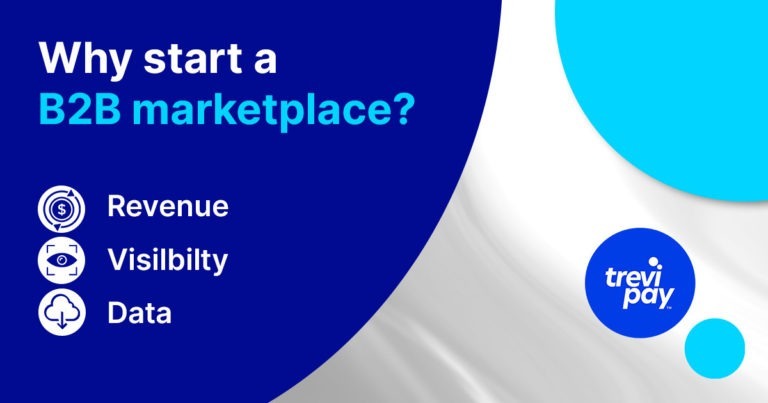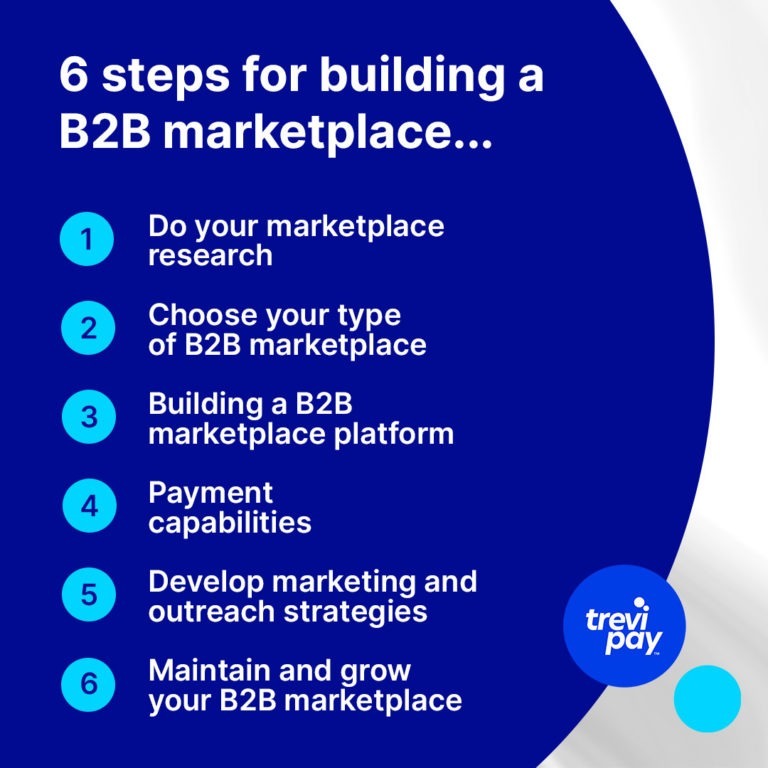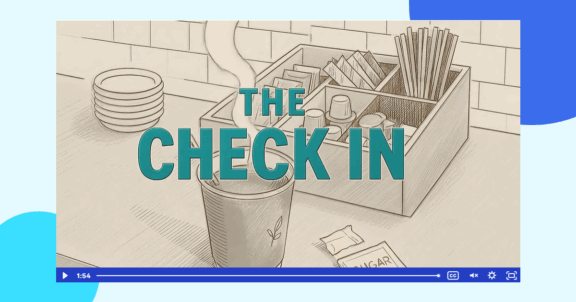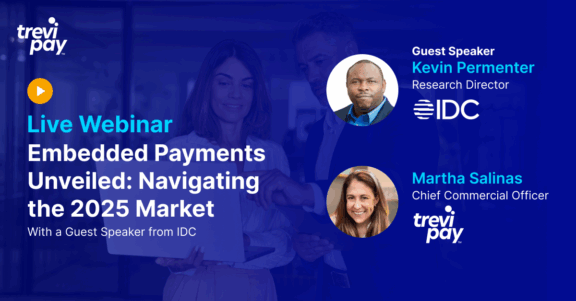For many business-to-business (B2B) buyers, Amazon Business may be their first experience in a B2B marketplace. It was launched in 2015 and is now the leading B2B marketplace in many areas.
B2B marketplace development might seem to be currently lagging behind its business-to-consumer (B2C) equivalents, but it is a more complex concept in many ways.
Either way, B2B is catching up fast…
But before we look at how to create a B2B marketplace, let’s define what we are talking about.
What is B2B?
B2B is a category for businesses that work primarily with other businesses. It includes a wide range of different companies, niches, and industries.
Many primarily associate B2B with wholesalers and manufacturers. But it can also include many other types of business. To give just a few examples:
- Accountants
- Transportation companies
- Caterers
- Construction companies
Despite the range it includes, it is still a useful category. Generalizations about the target audience, preferred payment options, complex transactions, and other basic features of B2B are useful. Especially for considerations when developing B2B sales, marketing, and other strategies.
What is B-commerce?
B-commerce is another name for B2B eCommerce. It includes websites and online B2B platforms (such as B2B marketplaces, see below) that facilitate trading exclusively or primarily between businesses.
What is a B2B marketplace?
A B2B marketplace (also known as a B2B eCommerce marketplace) is a multi-vendor marketplace (digital platform – i.e., website or app) where member businesses buy and sell goods to one another.
Like B2C marketplaces (see below), they simplify browsing and transactions. They do this in several ways, including by placing multiple products, prices, and vendors side by side.
There are several different models or types of B2B marketplaces (see below, ‘1. Choose type of B2B marketplaces’). They all share a common objective: to facilitate B2B vendor-to-buyer exchanges.
What is the current value of the market for B2B marketplaces?
B2B marketplaces are predicted to reach a total of 14% of all B2B eCommerce sales by 2025 – an increase of 7% from 2020. This represents a rise from one to four trillion US dollars.
What is the difference between a B2B and a B2C marketplace?
B2B and B2C are different in several ways, including:
- Audience
- Channels
- Average volume of orders
- Purchasing cycles
- Payments processes
These differences are also true of B2B and B2C marketplaces.
It is sometimes said that B2B marketplaces are less mature than B2C ones. However, this is an oversimplification.
Though their adoption has been slower, B2B marketplaces are more complex in some areas than B2C ones, including onboarding, financing, transaction processes, shipping, and more.
Why start a B2B marketplace?

There are several reasons to create a B2B marketplace. These include an increase in the following:
1. Revenue
As Jeff Bezos and Jack Ma have shown, online marketplaces can be highly lucrative…
The growth of B-commerce and B2B marketplaces means there is a potential for exponential growth that few other business models have.
2. Visibility
If your B2B marketplace carries your company’s branding, it will increase your brand visibility and market recognition. Especially if this branding is memorable and distinct.
3. Data
Popular online platforms, especially those that accept payments, generate a lot of high-quality data. This can be utilized in multiple ways to increase ad revenue or sell to third parties (with user consent).
6 steps for building a B2B marketplace…

Below are our top tips and considerations for anyone looking to build a B2B marketplace.
1. Do your marketplace research
As the B2B marketplace market grows, the competition for a share of it does, too.
Creating a B2B marketplace can be an expensive undertaking. There are several important factors to consider for its success (see below, ‘6. Maintain and grow your B2B marketplace’).
But before thinking about those, initial market research is essential. It helps to determine whether it’s a project worth undertaking or not.
Know your audiences
Vendors and buyers both need to be considered when planning a marketplace. Both of these have different requirements. And both are likely to include very different companies, especially if your marketplace is going to be cross-industry.
Speaking directly to potential B2B buyers and vendors will give insight into the importance of certain marketplace features.
Competition
Analyzing your competition will help you in a number of areas.
Firstly, if you have more than one competitor, you can learn a lot by comparing them to each other. You can look at what each one does well, not so well, etc.
It can also inform your marketing (see below, ‘4. Develop marketing strategies and tactics’).
2. Choose your type of B2B marketplace
There are several different types of B2B marketplace, including:
- Vertical B2B marketplace: Industry-specific
- Horizontal B2B marketplace: Across industries
- Many-to-many B2B marketplace: Businesses trade with one another, and the marketplace simply charges a fee for each trade
- One-to-many B2B marketplace: Run by third parties who control all bids, like auctions
Each has its own pros and cons. Though there is room to change later on (after all, Amazon famously started out just selling books), choosing the right inventory early will be important for your initial growth.
Choose business model
There are two main business models for B2B marketplaces:
- Subscription: Vendors’ and/or buyers’ membership is renewed over a fixed period with payments at agreed intervals
- Commission: Vendors pay an agreed percentage fee for sales made on the platform
3. Building a B2B marketplace platform
Building a B2B marketplace is a major project requiring thousands of hours of time from programmers, project managers, and others.
To begin, you will need to work with a specialist marketplace development team or agency.
There are pre-existing, out-of-the-box, and customizable marketplaces available. These can vary from branded to white-label solutions.
It is generally advisable to start with these rather than build a new platform from scratch (which can drain resources and take longer to be operational).
An existing model also enables you to gradually build up your marketplace whilst gaining useful experience.
User experience
User experience (UX) is one of the key success factors of any online marketplace. Convenience is king.
Building and consistently improving the UX of your marketplace should be a priority throughout its creation. Don’t forget that B2B customers are also B2C customers and increasingly expect similar functionality and UX.
4. Payment Capabilities
B2B transactions are more complex than B2C.
According to our research, they often involve between 6 – 10 decision-makers. And most B2B providers need to offer net 30, 60 or even 90 payment terms in order to sell products.
They gain more customers by doing so, but it can lead to poor cash flow and more admin.
With so many players involved, customers will likely directly compare multiple aspects – including payments – of marketplaces before signing up.
Not having their preferred payment method(/s) available could cost you their custom. As our white paper discusses:
“Almost half of B2B buyers have not completed a purchase for their company because their preferred payment method was not an option.”
Furthermore, embedding B2B payments is an important way to increase conversions and to reduce cart abandonment.
Read the full white paper: Better B2B Payments for Marketplaces.
Invoicing capabilities
In B2C, a receipt is simply issued when a purchase is made.
In B2B, the invoicing process is much more important and complicated. It includes net terms, credit notes (memos issued for erroneous or changed invoices), and dunning (reminders for overdue invoices).
Research by Tide found that the average UK SME offers clients 30-day payment terms. Despite this, 1 in 6 small businesses’ invoices are regularly paid late.
This means many businesses could face a serious cashflow problem if they aren’t on top of their invoicing and chasing payments.
Automating the invoicing process can make it significantly more effective. And building this capability into a B2B marketplace is a real advantage for attracting and retaining customers.
e-invoicing
E-invoicing (also known as electronic invoicing) is a type of Electronic Data Interchange (EDI) used for issuing and processing invoice data in specialized and integrated electronic formats.
These pre-defined formats enable senders’ and recipients’ accounting software to automatically insert and extract data to populate relevant fields. It is a great way to carry out high-volume invoice processing.
Financing capabilities
B2B financing is a unique and integral part of the B2B ecosystem. And being able to provide it at point of sale (via embedded financing) is a huge strength for any B2B marketplace.
B2C marketplaces sometimes offer buy now pay later (BNPL) financing options. B2B marketplaces have a wider range of B2B-specific financing solutions to offer, including invoice factoring, B2B BNPL, and more.
5. Develop marketing and outreach strategies
If you don’t reach a critical mass of customers, all of your efforts will unfortunately amount to nothing.
Devising both marketing and outreach strategies for your B2B marketplace should begin even before your platform has been launched.
The first stage is the marketing process is developing a distinctive brand.
As you will likely be competing with similar offerings, it should be distinctive relative to your competitors. This means you need a unique and memorable logo, name, messaging and other brand assets.
You should also develop an SEO, PPC and social media marketing plan ahead of launch.
(Google estimates that 89% of B2B researchers use the internet at some point during their research, for example).
Outreach by sales teams can be more focused than digital marketing more generally.
Its effectiveness may depend on the scale of your marketplace early on, i.e., if you plan to start small, a highly select outreach strategy might suffice.
However, the potential to achieve significant growth by accessing new customers on the marketplace will be very attractive to buyers.
Ratings and reviews
Ratings and reviews of your products or services will help build trust with your target audience. Many buyers will rely on these as part of their research into your marketplace platform.
Incentivising users to leave reviews on relevant platforms will help accelerate your growth.
For some areas, this can be done with post-purchase follow ups or general email marketing campaigns. In others, directly contacting high-profile buyers or vendors for endorsements will be better.
6. Maintain and grow your B2B marketplace
B2B marketplaces should be built with the mentality of ‘work in progress’ in mind. As technology and users’ expectations evolve, there is always room for improvement on any platform.
UX, for example, can be improved with data and user feedback. Seemingly small aspects of your marketplace, such as calls to action (CTAs) and search display results can be tested and tweaked over time to improve the browsing and buying experience.
We previously discussed the above and more in our blog: Key Success Factors for Your B2B Marketplace.
TreviPay’s B2B marketplace solutions
At TreviPay, we provide omnichannel payment solutions and a platform for B2B retailers. Our innovative payment and financing services provide B2B retailers with the tools to increase sales and reduce friction for many areas of the B2B buying journey.
Conclusion
The B2B market is growing and much of that growth is being seen in B-commerce and B2B marketplaces.
For those wondering how to launch a B2B marketplace, evaluating B2C ones is a good starting point. However, B2B platforms also have unique challenges, including areas such as payments, financing, shipping, and more.
If successful, a B2B marketplace can bring great benefits in terms of profit, brand visibility and data.
Starting a B2B marketplace should begin with market research of your audiences’ (both potential vendors and buyers) needs and the offerings of competitors.
There are several different types of B2B marketplaces and business models to choose from, including horizontal and vertical marketplaces, and subscription and commission models.
Building a B2B marketplace from scratch is rarely advisable, unless you are confident you have the time, resources and need to do so. Using an existing, flexible solution should be sufficient and more cost-efficient, especially if you are planning to scale gradually.
Offering a variety of payment methods on a B2B platform is crucial. The same goes for financing. Partnering with a specialist B2B payments provider will help attract customers and avoid high abandoned basket rates.
You also need to consider your marketing and outreach strategy. Standing out in an increasingly crowded marketplace is difficult if you are not highly visible and distinct from competitors.
Finally, developing a long-term strategy and mindset for ongoing B2B marketplace development is essential. Staying ahead of your competitors on UX and functionality will help you grow market share, too.






